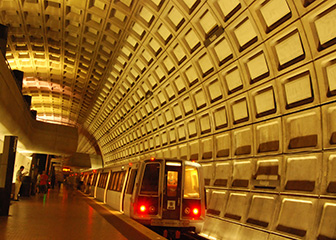Summary

| Quick Facts: Subway and Streetcar Operators | |
|---|---|
|
$56,880 per year
$27.35 per hour |
|
| High school diploma or equivalent | |
| None | |
| Moderate-term on-the-job training | |
| 6,500 | |
| 10% (About as fast as average) | |
| 600 | |
What Subway and Streetcar Operators Do
Subway and streetcar operators transport passengers in urban and suburban areas. The vehicles they drive travel underground, on above-ground and elevated tracks, on streets, or on separate tracks.
Work Environment
Almost all subway and streetcar operators work for local governments that run transit systems within their jurisdiction. Most work full time.
How to Become a Subway or Streetcar Operator
Operators need a high school diploma or equivalent and several months of on-the-job training to enter the occupation.
Pay
The median annual wage of subway and streetcar operators was $56,880 in May 2010.
Job Outlook
Employment of subway and streetcar operators is projected to grow 10 percent from 2010 to 2020, about as fast as the average for all occupations. Growth is expected because several cities have proposed building new subway or streetcar systems or expanding existing ones.
Similar Occupations
Compare the job duties, education, job growth, and pay of subway and streetcar operators with similar occupations.
O*NET
O*NET provides comprehensive information on key characteristics of workers and occupations.
Contacts for More Information
Learn more about subway and streetcar operators by contacting these additional resources.











